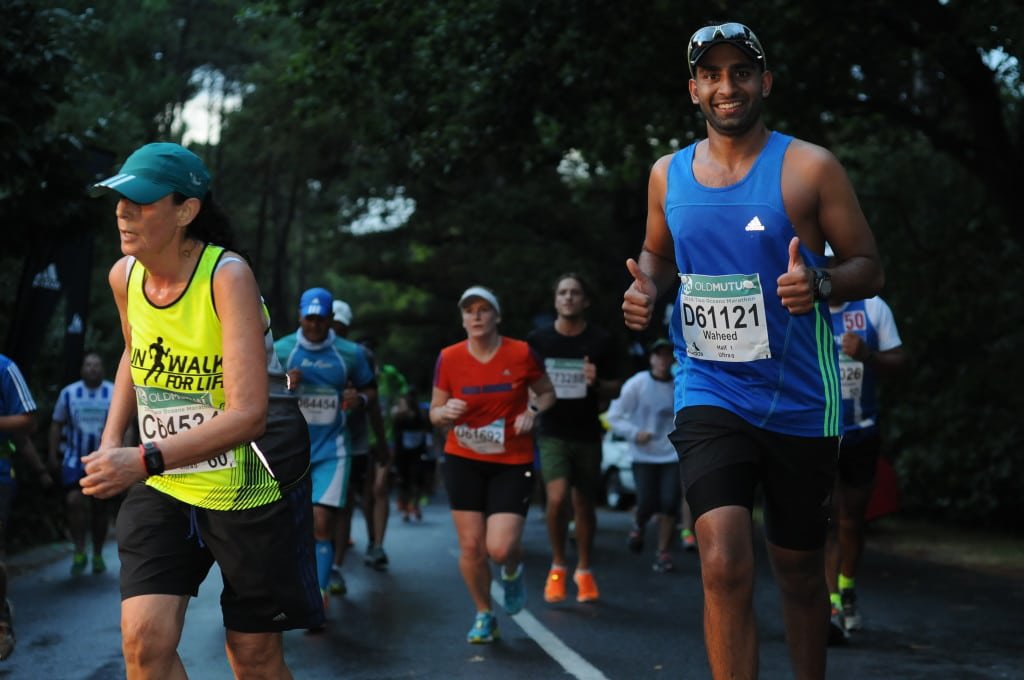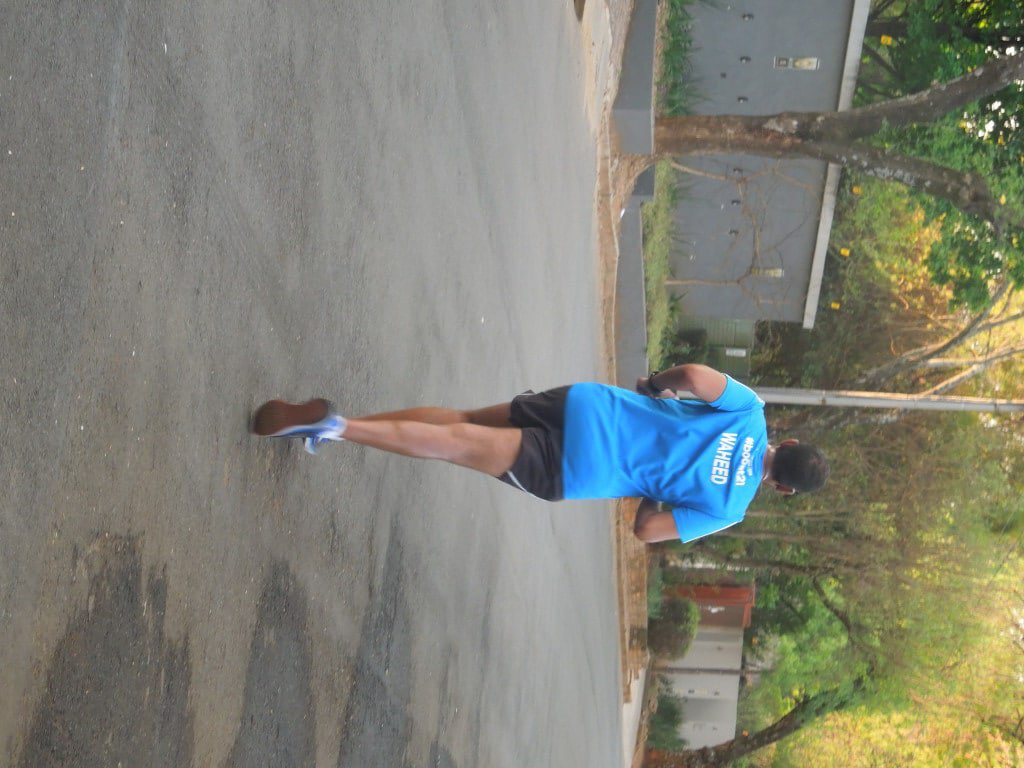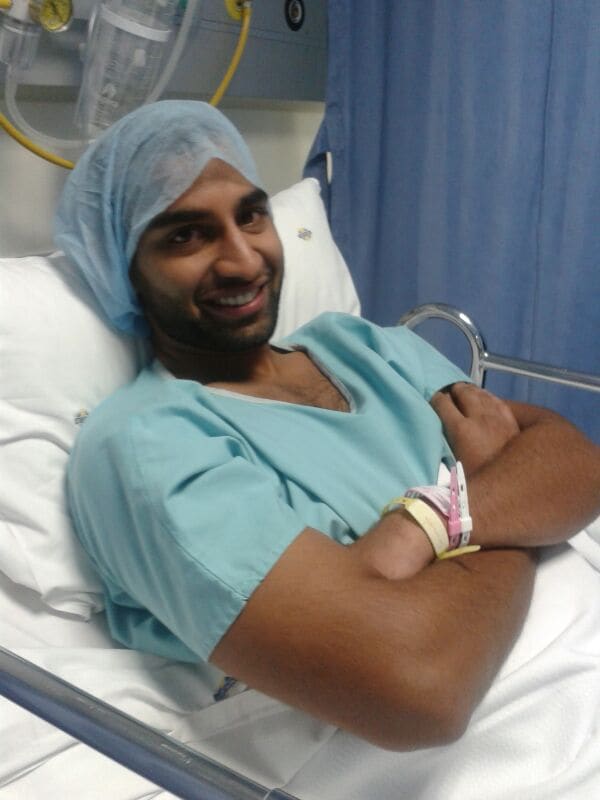Waheed Outran Cancer & Came Out Stronger!
For avid Joburg runner Waheed Vadi, the ultimate test of endurance came in the form of an aggressive, very rare form of cancer. – By Waheed Vadi

My running story began in 2011 – I was at University and trying to juggle academic pressure along with committing to sport in some way or another.
I had always been a person who enjoyed team sport (cricket in particular) but I was finding it harder and harder to schedule it into my busy schedule. That’s how I found running – it was the perfect way for me to keep fit without eating into time that needed to be dedicated to academics.
My first-ever road race was at WITS when I ran the Varsity Kudus race in July 2011. Shortly thereafter I ran my first ever half marathon and the bug had well and truly bitten – I was addicted to running! However, a test of my endurance far bigger than running could ever pose was just around the corner.

In December 2012 I visited my GP as I had detected an unusual, worrying lump in my groin. He examined it under local anaesthetic in his rooms, and even though my family requested histology of the lump the doctor said this was not necessary – he believed the lump to be a benign lipoma (A lipoma is a growth of fatty tissue that slowly develops under the skin).
However, in March 2014 I noticed that the lump had started to grow back. Upon consultation with Dr Google, I came to the understanding that a lipoma should never come back and that it should DEFINITELY not come back in the same spot. So, I visited a urologist in June 2014 (after my mid-year exams had ended), and had the lump examined under general anaesthetic at the Milpark Hospital.
Two days later, on 25 June 2014, my urologist called to inform me that the histology showed that I had an aggressive, very rare, cancer called Leiomyosarcoma (ED – Leiomyosarcoma (LMS) is a type of soft tissue sarcoma. Soft tissue sarcomas can develop in muscle, fat, blood vessels, or any of the other tissues that support, surround and protect the organs of the body).
I was admitted to the Donald Gordon Hospital on 26 June and spent two days having tests to ascertain the extent of the cancer. Then, from 30 June to 7 July 2014 I under went several more tests and procedures as an outpatient in preparation for surgery. This was a hugely traumatic time in my life as I was informed by my team of doctors that if the cancer had spread to my organs (lungs, liver, etc.) there would be very little they could do for me.

Thankfully, the scans showed the cancer to be localised and this meant that we could go ahead with major surgery. My family and I were told that other treatments (like chemotherapy) would prove ineffective in fighting this cancer – which meant that a major excision was our only real option.
So, on 8 July 2014, I had a major surgery and reconstruction, followed by staying in hospital for a further six days. The nature of the surgery was such that I could not sit for a period of six weeks – I could only lie down on my right side, or stand completely upright.
This meant that I was housebound for the duration of the recovery as getting into a car proved impossible. The recovery process rendered me completely exhausted – for the most part, I had very little energy and spent most of my time lying down or sleeping. Obviously, as an athlete, this was a very frustrating experience for me – I was unable to do anything for myself and I was losing my muscle tone and fitness rapidly and I was gaining a lot of weight.
On the 22 August that year, I was finally allowed to sit down again. My first real outing after this was to the gym when my mom took me for a walk around the cricket fields at Old Eds Cricket club. This is one of the best memories of my recovery, as I felt reinvigorated and alive again – I was outdoors and doing something mildly active for the first time in months!
By the end of November 2014 I was ready to begin my comeback – but my doctors insisted that this would have to be aided by a biokineticist. Over a period of three months, I slowly integrated myself back into the sporting world with the aid of an exercise plan set out by the biokineticist. The comeback, however, proved to be much slower than I anticipated and I only got back to real running midway through the following year (2015). It just so happened that my comeback race was the Varsity Kudus Road Race – the race where it had all started.
Even though I wasn’t quite as fast as I used to be, it was just an awesome feeling to be racing again! Right now in 2017, I am happy and healthy (over three years cancer-free) and I’m running more than ever. I have been able to up my mileage very well and I run almost every day now. I’m running further and faster than ever before. The road to this point has been far from easy but I’ve tried to take things in my stride with a smile on my face. Recovery never goes according to plan but I think that it teaches you a lot about yourself and I’m better for this journey.
One of the biggest challenges I’ve had to deal with is the post-traumatic stress of the whole ordeal. That only hit me about two years post-cancer. As men, however, we tend to not want to talk about things like that and we tend to bottle it in. I eventually realised that that wasn’t working for me and I needed to find better ways of coping. Thankfully, with the help of a therapist, I’ve been able to work my way through it.
A post shared by Waheed Vadi (@waheedvadi) on
I’ve run MANY half marathons and the natural progression would be to tackle a full marathon in the not too distant future. I will need clearance from my team of doctors before taking it on – but I think I can talk them into it! I would also love to take on the Ironman in the next little while (I’d probably like to do a half Ironman within the next 18 months).
I would like my story shared because I feel like it could benefit others who are walking a similar path to the one I’ve walked. It is important that we start to hear more and more success stories in the fight against cancer. Cancer is a word not a sentence. It CAN be overcome.
READ MORE ON: cancer cancer survivor

